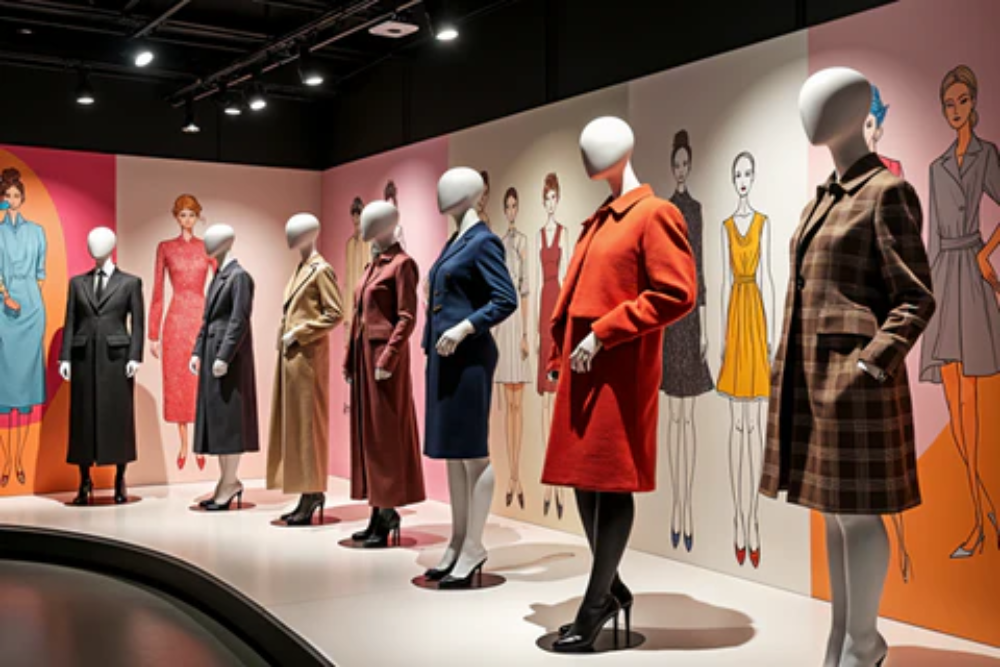Introduction
In recent years, the fashion industry has undergone a transformation as technology and fashion converge, resulting in the rise of smart clothing. Smart clothing, or wearable tech, is a category of garments embedded with sensors, electronics, and connectivity features that allow them to collect data, interact with other devices, and perform a variety of functions that go beyond traditional fashion. From fitness tracking to temperature regulation and even health monitoring, smart clothing is redefining the relationship between what we wear and the technology that powers our daily lives. This article will delve into the key aspects of smart clothing, its benefits, challenges, applications, and the future of wearable tech in the fashion industry.
- What is Smart Clothing?
Smart clothing refers to garments and accessories integrated with sensors, circuits, and other electronic components that enable them to interact with the wearer’s body and the surrounding environment. Unlike traditional clothing, smart garments can collect data, send it to other devices, or even perform specific actions based on the wearer’s needs or external stimuli. This technology is built to improve the functionality of clothing, making it not only a part of our wardrobe but also a tool for health, comfort, and convenience.
Key Features of Smart Clothing:
- Embedded Sensors: Smart garments often feature sensors embedded within the fabric to monitor vital signs, environmental conditions, and movement.
- Connectivity: These clothes are typically designed to connect to smartphones, apps, or other devices through Bluetooth or Wi-Fi to share data or receive updates.
- Power Sources: Smart clothing usually includes small power sources like batteries, often rechargeable, to keep the technology operational.
- Durability: Since the technology is embedded into fabrics, these garments need to maintain wearability and durability, making advanced textile engineering essential.
- Types of Smart Clothing
Smart clothing can be categorized into two main types: active wear and passive wear. Each serves a different purpose, and some garments combine both features.
Active Wear (Interactive Clothing)
Active wear features garments with sensors and electronics that allow the garment to change or respond in real-time. This includes features like heating and cooling systems, lighting, or other adjustments to accommodate environmental changes.
Examples:
- Heated Jackets: These jackets are equipped with flexible heating elements that can be powered on-demand, providing warmth in cold conditions.
- Climate-Responsive Clothing: Some smart clothes change color or texture based on the temperature or humidity, providing the wearer with greater comfort.
Passive Wear (Monitoring Clothing)
Passive wear refers to clothing that is used primarily for monitoring health metrics or tracking physical activity without directly interacting with the environment. These garments are used to track fitness data, such as heart rate, body temperature, and muscle movement.
Examples:
- Fitness Tracking Apparel: Clothes with integrated sensors that monitor heart rate, calories burned, or even posture.
- Smart Underwear: Underwear with sensors that track posture, movement, and skin temperature to offer insights into health.
- Applications of Smart Clothing
Smart clothing has a broad range of applications that go beyond fitness and wellness. Here are some of the key uses:
- Health and Wellness Monitoring
One of the most promising applications of smart clothing is in the health and wellness sector. These garments are designed to monitor various aspects of an individual’s health, allowing users to track heart rate, respiratory rate, body temperature, muscle activity, and even stress levels.
- Health Monitoring: Wearables like smart shirts equipped with biosensors track heart rate, body temperature, and respiratory rates, providing real-time health data to users and healthcare professionals.
- Posture Correction: Some smart shirts or wearables have built-in sensors that monitor posture, offering feedback to the wearer to help improve their posture over time.
- Sleep Tracking: Smart pajamas and sleepwear monitor the wearer’s sleep patterns and provide insights into sleep quality. They can track heart rate variability, body movements, and sleep stages.
- Sports and Fitness
Smart clothing is revolutionizing the fitness and sports industry by providing real-time data that can improve performance, track progress, and prevent injuries. Sensors embedded in sportswear can measure muscle activity, movement patterns, and muscle fatigue, providing valuable insights to athletes and trainers.
- Smart Sportswear: Products like smart leggings and compression shirts are designed to track muscle movement, monitor exertion levels, and reduce the risk of injury through enhanced support.
- Performance Tracking: Garments that monitor distance traveled, calories burned, hydration levels, and other metrics give athletes the ability to optimize their training routines.
- Fashion and Aesthetics
Beyond health and fitness, smart clothing is making waves in the fashion industry. Smart textiles allow designers to create garments that respond to environmental factors, change colors, or even display digital content, providing endless possibilities for interactive fashion.
- Color-Changing Clothing: Some smart fabrics change color based on external stimuli like temperature or light, offering wearers the ability to adapt their clothing to their surroundings.
- Digital Clothing: Designers have explored creating garments that can display digital images or graphics, offering new ways to express personal style and creativity.
- Light-Up Clothing: Clothing with integrated LEDs can light up or flash in response to music or motion, offering a unique combination of fashion and technology.
- Benefits of Smart Clothing
- Enhanced Comfort and Convenience
Smart clothing offers a level of convenience and comfort that traditional clothing cannot. For instance, temperature-controlled jackets adjust to the wearer’s body heat, ensuring comfort in both hot and cold environments.
- Data Collection and Insights
The ability to collect real-time data opens up possibilities for personalized health insights. Whether it’s tracking fitness progress or managing chronic conditions, smart clothing offers actionable data that can inform lifestyle choices.
- Injury Prevention
Smart clothing equipped with sensors that track muscle activity, movement, and posture can help detect early signs of injury. Wearables can alert users if they are performing exercises incorrectly, helping to avoid strains or other injuries.
- Sustainability
Smart fabrics can also contribute to more sustainable fashion. For instance, garments that monitor wear and tear can help prevent premature disposal, offering insights into when a garment needs repair or replacement.
- Challenges of Smart Clothing
- Cost
One of the major challenges facing the widespread adoption of smart clothing is the high cost. The integration of advanced technology, sensors, and power sources into clothing materials increases production costs, making these items more expensive than regular clothing.
- Durability and Maintenance
Smart clothing needs to be both durable and functional. However, the embedded electronics and sensors can pose challenges in terms of washing, durability, and long-term wear. Ensuring that these garments remain functional after repeated use and washing is a significant hurdle.
- Privacy Concerns
Since smart clothing collects sensitive data about the wearer, there are concerns about privacy and security. Protecting this data and ensuring that it is used ethically is a critical issue in the development of wearable technology.
- Integration with Other Technologies
For smart clothing to be truly effective, it needs to be seamlessly integrated with other wearable devices or apps. This integration can sometimes be a challenge, as different manufacturers may use incompatible platforms or protocols.
- The Future of Smart Clothing
The future of smart clothing holds immense potential. As technology advances, we can expect even more sophisticated and specialized garments that offer greater convenience, comfort, and functionality. Some key developments to look forward to include:
- Advanced Health Applications
Smart clothing could become a major tool for healthcare, providing real-time diagnostics and early detection of health conditions like heart disease, diabetes, and respiratory issues.
- Customization
With advancements in materials science, we can expect even greater levels of customization in smart clothing. Wearers may soon be able to tailor their garments to fit their specific needs, whether it’s controlling body temperature, monitoring health metrics, or adapting to the environment.
- Enhanced Fashion Experiences
The integration of augmented reality (AR) and virtual reality (VR) into smart clothing will likely enhance the fashion experience, allowing wearers to experiment with digital fashion and virtual wardrobes.













